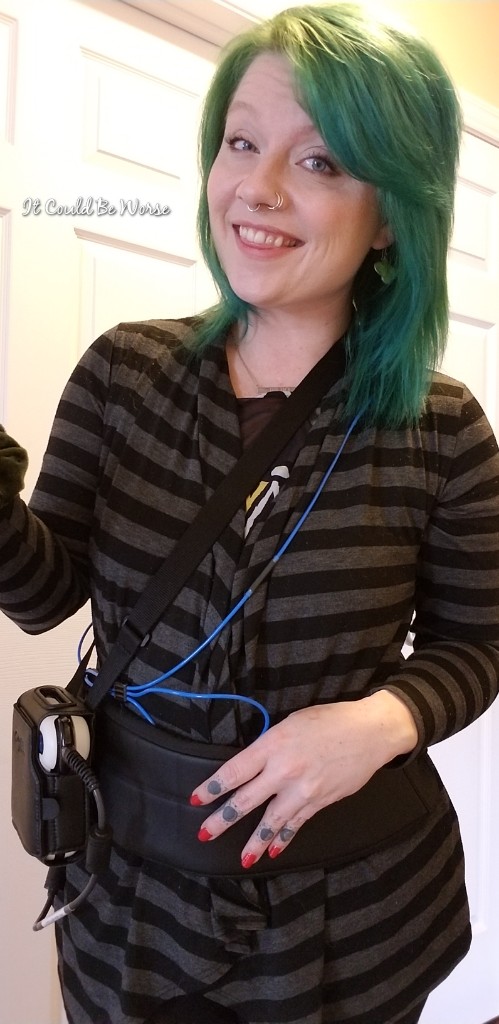A few weeks ago, I mentioned having a magnetic resonance enterography (MRE) in preparation for a capsule endoscopy. This was my third capsule endoscopy and I wanted to share my perspective as a patient.
A capsule endoscopy uses a capsule the size of a large pill with a wireless camera inside. The patient swallows the pill to allow viewing of the digestive system, sometimes after or in lieu of a colonoscopy and endoscopy. The procedure has the benefit of not requiring anesthesia.

Because I have small bowel Crohn’s disease, this scope procedure is beneficial to my gastroenterology team. Regular colonoscopies and endoscopies do not show the small bowel, where the majority of my inflammation is found. The capsule endoscopy moves from top to bottom of the digestive system while the camera takes multiple photos and creates a video-like viewing of the intestines.
To prepare for the capsule, my care team ordered the MRE to look for any swallowing problems. After that came back OK, the capsule endoscopy was scheduled.
I prepped the night before with magnesium citrate and bisacodyl, which are laxatives to help flush out my bowels for better viewing. This was my third capsule endoscopy and the first time I have been asked to prep. I wasn’t prepared for the magnesium citrate to taste like pure lemon. It was a very effective bowel prep, and I have asked my gastroenterology team whether it could replace mixtures such as GoLYTELY. They told me I could possibly do this prep instead.

Also the night before, I went on a diet of clear liquids — no red or purple dyes — similar to a regular bowel prep.
The procedure begins with the patient swallowing the camera, which starts taking photos even before it enters the body. I always wave to my gastroenterology team before I swallow it. The pill may be hard to swallow on the first try, but it gets easier.
A fanny pack battery helps transmit the photos from the capsule. The battery lasts about 24 hours, but the equipment is usually returned the same day. The capsule is disposable.
My lower back and waist were tired and sore after wearing the equipment all day. I wore a sweater to cover my neck because the strap was slipping and rubbing it raw.

Because Crohn’s disease can lead to bowel wall thickening, ulcers, strictures, and fistulas, there is a risk of the capsule getting stuck. Each care team will weigh the risk and benefits. After each of my three procedures, the capsule passed with my bowel movement the next morning. Sometimes the battery light is still blinking, which is how I noticed when the first two capsules left my body. The third was dead on arrival.
An X-ray will be ordered if the capsule doesn’t exit the body within a day or two. If the capsule has gotten stuck, it is a bowel obstruction that can lead to nausea, vomiting, stomach swelling, and pain. Surgery will be needed to remove it. I tend to stand the majority of the day of my procedure to help it get as far through my bowels as possible, although I’m not sure that works.
These scopes help with diagnosing and managing your disease and medication. I suggest discussing them with your care team.
Note: IBD News Today is strictly a news and information website about the disease. It does not provide medical advice, diagnosis, or treatment. This content is not intended to be a substitute for professional medical advice, diagnosis, or treatment. Always seek the advice of your physician or other qualified health providers with any questions you may have regarding a medical condition. Never disregard professional medical advice or delay in seeking it because of something you have read on this website. The opinions expressed in this column are not those of IBD News Today, or its parent company, BioNews Services, and are intended to spark discussion about issues pertaining to IBD.

